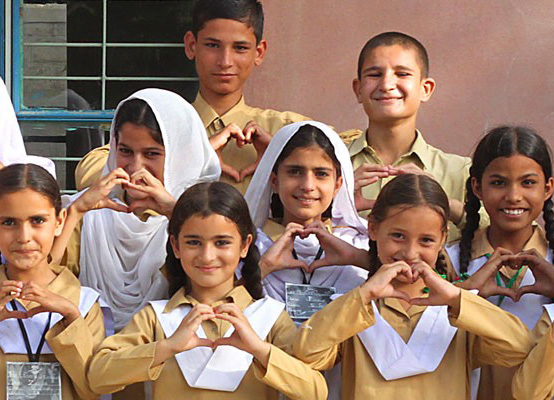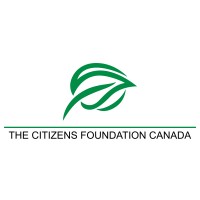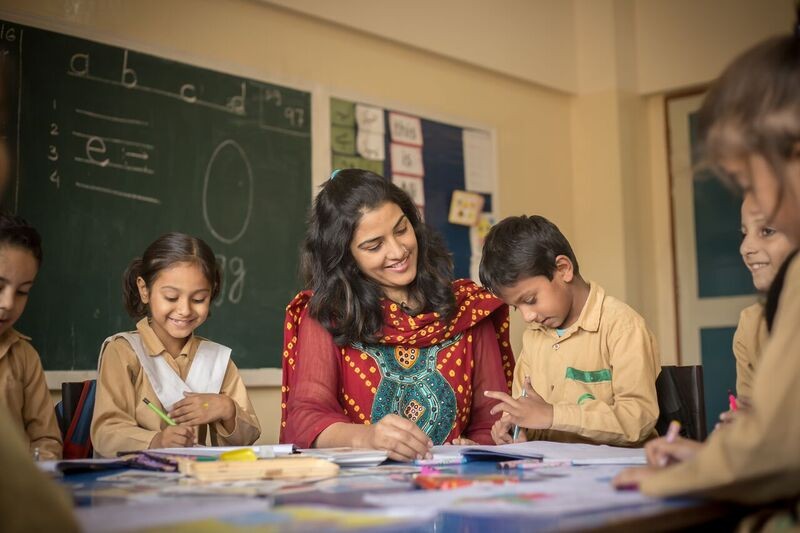 Educate a child, Change a Life!
Educate a child, Change a Life!
Lack of quality schools for poor girls and boys in Pakistan
A decade ago, we visited a small home in the village of Salehpat, Sindh. There, on a woven bed, sat a shy little girl in her TCF School uniform and her feeble old grandmother. Five-year-old Madiha had just been brought into school by her Principal, Madam Saima Memon, who had seen her begging alongside her grandmother in the busy marketplace. Barefoot under the blazing sun, Madiha was wading through throngs of busy shoppers with a begging bowl in her hand when Ms. Saima saw her for the first time. “She held out the palm of her hand,” Ms. Saima recalls with a bright smile. “I saw a strange gleam of hope in her eyes when she looked at me. I took her little hand in mine and asked, ‘Dhee (daughter), would you like to be in school instead?’ Her face lit up instantly! Fast forward 10 years, we met Madiha again! This time we saw her as a confident young girl who was preparing for her Board Exams. “She is the brightest student in the class, with 100% attendance,” her teacher said.
Necessity
Quality education for girls in the slums of Karachi
Activity
TCF operates schools in the poorest of slums in Karachi
Countable effort
Girls are learning Instead of playing on the streets
Result
TCF has put 266,000 poor children, half of them girls, in schools
Systemic effect
Quality education for those who would otherwise have no education
Background
Pakistan has the world’s second-highest number of out-of-school children (OOSC) with an estimated 22.8 million children aged 5-16 not attending school, representing 44% of the total population in this age group. Girls are particularly affected, where 32% of primary school age girls are out of school in Pakistan, compared to 21% of boys. By grade nine, 87% of girls are out of school in Pakistan. Pakistan has also been listed among developing countries expected to be hardest hit by the current COVID-19 pandemic. A country where 25% of the population lives below the poverty line (earning less than $2 a day) and relies on daily wages – this is the also demographic that sends their children to TCF’s high quality network of schools built for out-of-school children, especially girls. TCF depends on philanthropic giving but fundraising is expected to fall by 40% due to the global economic crisis. TCF role in providing quality education to underprivileged. Currently, TCF operates in 700 locations across 61 districts in Pakistan, with over 266,000 children, half of them girls, enrolled in 1,660 school units. TCF employs 13,000 female teachers and principals, and is the largest employer of women in the private sector in Pakistan.
The good deed
TCF takes children from the street and put them in schools, provides them text books and uniforms, and give them quality education by well trained and caring faculty, and change their lives. TCF education prevents child labor, early marriages of girls, and provide independence and employment to its graduates 88% of whom are either enrolled in further education or are currently employed. TCF breaks the cycle of poverty and ignorance and transform lives with custom design text books and teaching aids. All TCF schools are established in purpose-built premises, designed by reputed architects. School buildings are equipped with airy and fully furnished classrooms, an administrative block, a play area, library, computer labs and science labs, an art room and all essential facilities to provide students with a stimulating learning environment.

About PAKISTAN
Islamabad/Karachi
Population
226,437,225
(Pakistan 2021)
Per Capita GDP
1,190 US$ (2021)
HDI
Placed 154th
out of 189
Pakistan is the sixth largest country by population in the world and one of the poorest in terms of socio-economic development.
About the organization and further information

The CITIZENS FOUNDATION CANADA




